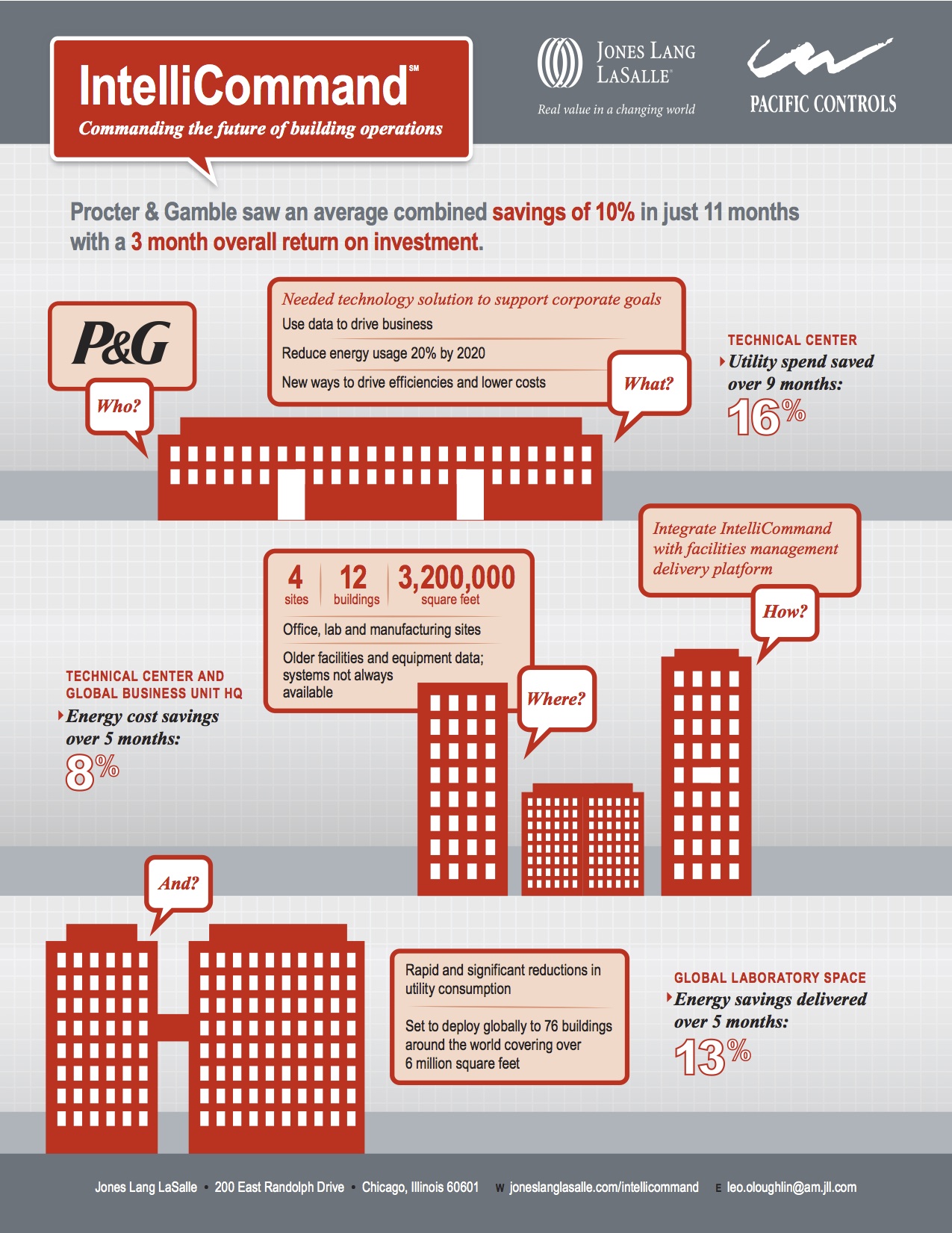Embedding resilience into building solutions is the theme at the BUILDINGChicago/Greening the Heartland expo and conference, September 9-11 at the Holiday Inn Chicago Mart Plaza. From regional success stories to emerging technology presentations, the 70+ continuing education sessions will explore the various ways that sustainable construction and design adds value to the built environment.
One not-to-miss presentation, on Monday, September 9 from 1:30-2:30 p.m., will feature Procter & Gamble’s smart building management program. The premise of this "Smart Buildings and Sustainability" presentation is that smart building technology can lead to energy reductions of 15 to 20 percent—even in already-efficient buildings—through continual commissioning and identification of equipment malfunctions that would not otherwise be detected by building engineers.
How so? Recent advancements in technology are allowing owners to connect with facilities as never before, leveraging existing automation systems to achieve cost-effective energy improvements. Just as smart buildings are getting smarter, so is the ability to manage them by using real-time data to drive more informed decision-making and execution. Technology solutions that were once cost-prohibitive have now become affordable and are driving measurable returns. Utilities are investing in smart grid technology that will further enhance the value of smart building systems.
Using P&G’s IntelliCommand case study, this presentation will provide examples of how building data analytics enabled facilities managers to quickly find and address energy usage anomalies, saving more than the cost of implementation in the first year, and paving the way for LEED certification.
In terms of resilience, smart building technology delivers—with cost efficiency, business risk management tools, increased operational effectiveness and improved ability to meet environmental goals. For more information, register for the conference, or download the P&G case study.
Related Stories
| Nov 27, 2013
Exclusive survey: Revenues increased at nearly half of AEC firms in 2013
Forty-six percent of the respondents to an exclusive BD+C survey of AEC professionals reported that revenues had increased this year compared to 2012, with another 24.2% saying cash flow had stayed the same.
| Nov 27, 2013
Wonder walls: 13 choices for the building envelope
BD+C editors present a roundup of the latest technologies and applications in exterior wall systems, from a tapered metal wall installation in Oklahoma to a textured precast concrete solution in North Carolina.
| Nov 27, 2013
University reconstruction projects: The 5 keys to success
This AIA CES Discovery course discusses the environmental, economic, and market pressures affecting facility planning for universities and colleges, and outlines current approaches to renovations for critical academic spaces.
| Nov 26, 2013
7 ways to make your firm more successful
Like all professional services businesses, AEC firms are challenged to effectively manage people. And even though people can be rather unpredictable, a firm’s success doesn’t have to be. Here are seven ways to make your firm more successful in the face of market variability and uncertainty.
| Nov 26, 2013
Design-build downsized: Applying the design-build method in an era of smaller projects
Any project can benefit from the collaborative spirit and cooperative relationships embodied by design-build. But is there a point of diminishing return where the design-build project delivery model just doesn't make sense for small projects? Design-build expert Lisa Cooley debates the issue.
| Nov 25, 2013
Electronic plan review: Coming soon to a city near you?
With all the effort AEC professionals put into leveraging technology to communicate digitally on projects, it is a shame that there is often one major road block that becomes the paper in their otherwise “paperless” project: the local city planning and permitting department.
| Nov 22, 2013
Kieran Timberlake, PE International develop BIM tool for green building life cycle assessment
Kieran Timberlake and PE International have developed Tally, an analysis tool to help BIM users keep better score of their projects’ complete environmental footprints.
| Nov 20, 2013
Architecture Billings Index slows in October; project inquiries stay strong
Following three months of accelerating demand for design services, the Architecture Billings Index reflected a somewhat slower pace of growth in October. The October ABI score was 51.6, down from a mark of 54.3 in September.
| Nov 19, 2013
Pediatric design in an adult hospital setting
Freestanding pediatric facilities have operational and physical characteristics that differ from those of adult facilities.
| Nov 18, 2013
6 checkpoints when designing a pediatric healthcare unit
As more time and money is devoted to neonatal and pediatric research, evidence-based design is playing an increasingly crucial role in the development of healthcare facilities for children. Here are six important factors AEC firms should consider when designing pediatric healthcare facilities.

















